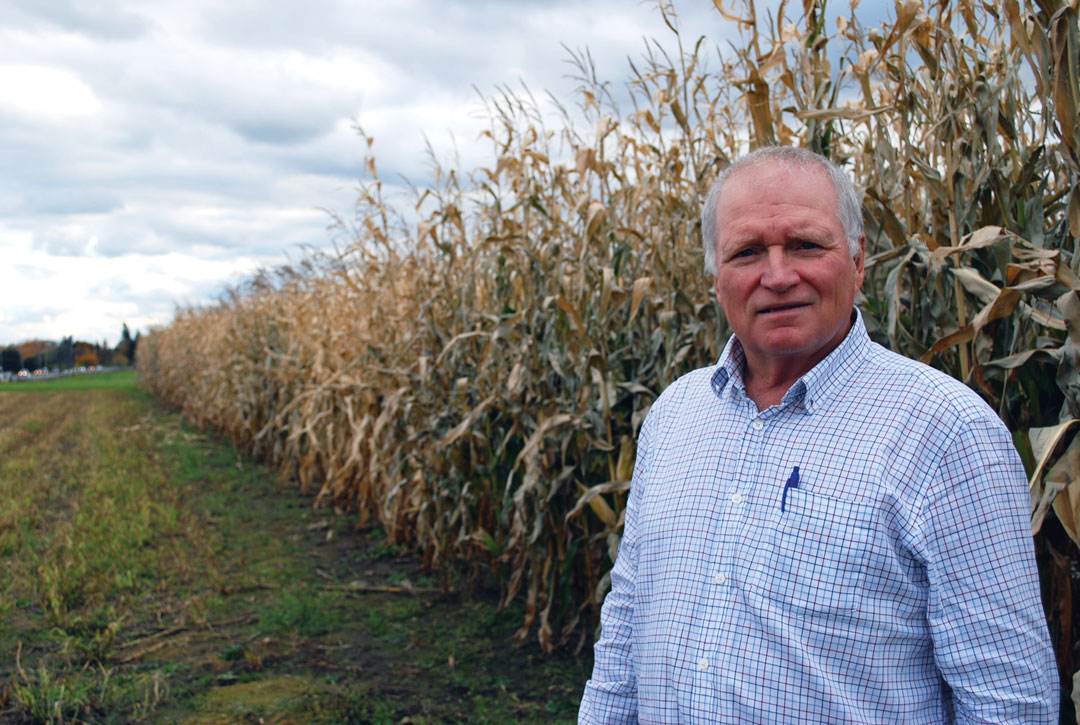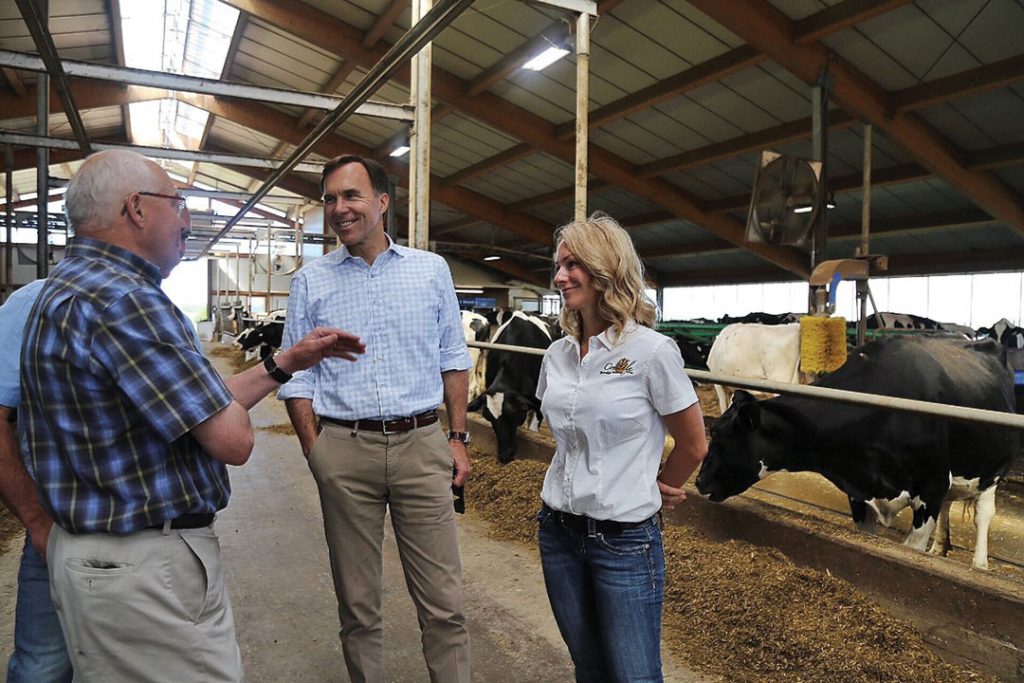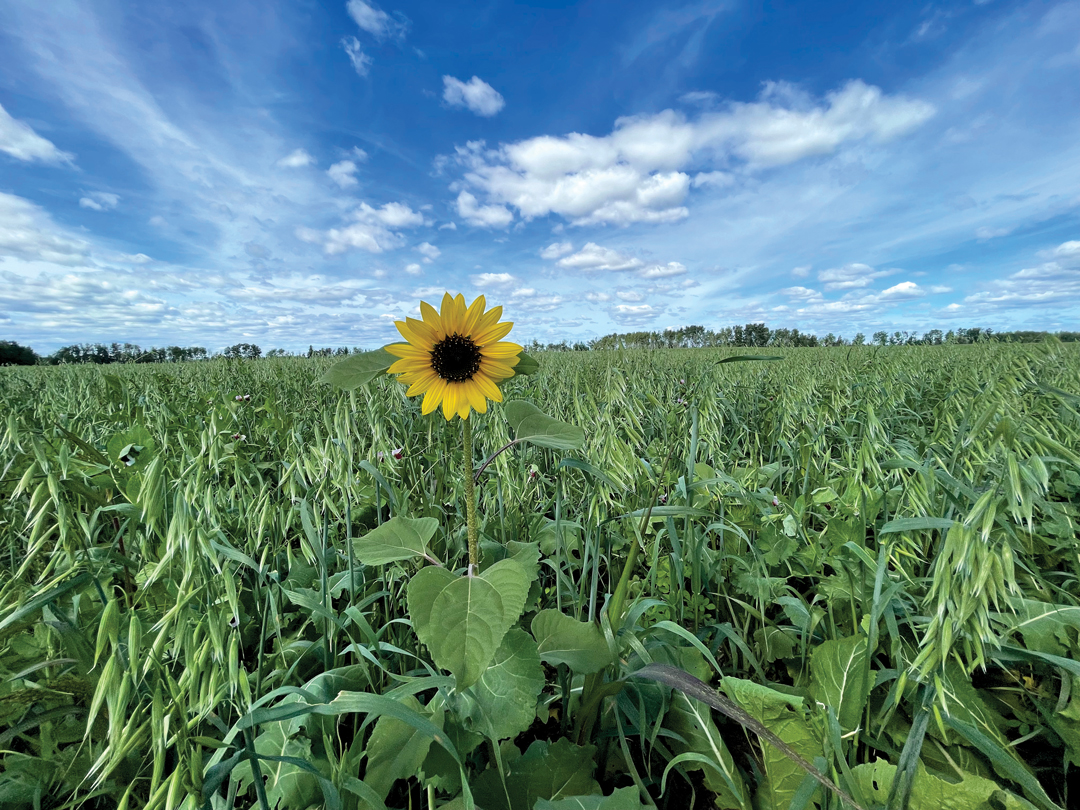TAX TRAUMA
PROPOSED CHANGES HAD FARMERS SEEING RED (INK)
BY GEOFF GEDDES
To stay in the black, farmers must adapt to change at every turn, so why did recently proposed tax changes by the federal government cause such a furor in agriculture? According to industry members, there was fear that as Ottawa targeted “fair taxation of the wealthy one per cent,” farmers would certainly be caught in the crossfire.
The proposed revisions were announced in July 2017 with the intent of introducing them to Parliament in the fall. They were designed to close three loopholes that, according to the government, enabled high-earning business owners to avoid higher tax rates.
The changes targeted income sprinkling, which allows business owners to split their income among family members, whether those family members are involved in the business or not. The government also proposed changing methods for converting income into dividends and capital gains, as well as limiting passive business income.
While the government may have braced to feel a degree of heat for these moves, it was likely jarred by the firestorm that followed.
“These were sweeping changes,” said Alberta Wheat Commission chair Kevin Auch. “We saw a lot of reaction from the farming community and on social media. People were really concerned about what this could mean for their livelihood.”
Auch, along with AWC general manager Tom Steve and government relations and policy manager Erin Gowriluk were the first farm organization representatives to meet with the Prime Minister’s Office and officials of Finance Canada on the taxation issue in early September in Ottawa.
According to Merle Good, an experienced farm management adviser and farm succession expert, this concern was well-founded. One exception was income sprinkling, which Good saw as less problematic since “most farmers live modestly and don’t have a lot of income to sprinkle.”
The government was quick to reassure farmers on this provision, as well. “We want to be clear that family members who work on the farm and contribute to the business won’t be affected by proposed changes,” said Daniel Lauzon, Finance Canada director of communications.
More concerning for Good was the limiting of passive income. “You can’t compare passive income earned in a profession such as medicine to the situation in a resource-based industry like agriculture,” he said. “In farming, it takes at least $9 to $11 of capital to create $1 of earned income. When you’re paying half a million dollars for a combine, you need a rainy-day fund from passive income to make a reasonable down payment. Equating farmers to professionals who just pay office rent is a classic case of apples and oranges.”
One of the most concerning proposals for many in agriculture related to succession planning. This change, which Good said impacted incorporated farmers, related to the anti-avoidance rule and something called “surplus stripping.”
“For the first 40 years of their lives, farmers sacrifice income to create capital wealth,” said Good. “When they retire, they want to convert that capital wealth into income using the capital gains exemption. Since a farmer doesn’t have a company-paid pension plan, this is the best option for funding their retirement.”
Using the example of someone selling a quarter-section of land to his or her company for $500,000 to claim the capital gains exemption, Good explained the problem when tax changes prohibit that practice: “Under the new rules, that $500,000 would have been taxed as a deemed dividend at up to 36 per cent even if I sold the land to my incorporated son or daughter, as many farmers are inclined to do. But if I sold it to a neighbour or complete stranger, I [would have] paid no tax.”
Ron Bonnett, president of the Canadian Federation of Agriculture, shares Good’s concern about altering succession rules. “This change could be where farmers [would have felt] the most impact,” he said. “If you can’t take full advantage of the capital gains exemption for transferring your business to the next generation, you may not have enough money to retire and your son or daughter will have to pay more for the operation. So, it’s really a double whammy affecting both buyer and seller.”
For Alberta Barley board member Dave Bishop, who farms near Barons, this change epitomized what was wrong with the proposal and the process. “I’ve invested a lot of time and money in succession planning so I can pass the farm to my sons, and I did that based on the provisions of the Income Tax Act,” he said. “If they were to change key elements of the act without considering all the consequences, how could I plan for the future and play by the rules when I don’t know what they are?”
While most of the anti-avoidance rule changes impacted farmers with corporations, one change could have greatly affected unincorporated farms.
“Under the proposal, if you transferred land to a child and they later sold it, their capital gains exemption would be reduced by however much the land appreciated from the time you first purchased it to when that child turned 18,” said Good. “So, if you bought land in 1975, sold it to your 18-year-old daughter in 2017 and she sold it 10 years later, all the gain in land value from ’75 to 2017 would come off her capital gains exemption.” Since that gain could represent 90 per cent of the exemption, the reason for concern was clear.
Perhaps anticipating some of these objections, the government provided a 75-day consultation period—which ended Oct. 2, 2017—to gather taxpayer feedback on the proposed changes. That’s when a potential bad-news story for agriculture took a turn for the better. Commodity organizations and individual farmers from across the country voiced concerns with the proposals and, more importantly, had their voices heard.
“Right away, we met with the Prime Minister’s Office and the Department of Finance Canada,” said Bonnett. “We also joined with other groups to have (tax and legal consultant) MNP evaluate the impact of the changes and give us hard numbers to support our position.”
When the smoke cleared from all of the meetings, phone calls and emails, most in agriculture liked what they saw.
It began with Ottawa saying it would move forward on an election pledge to lower the small business tax rate to nine per cent from 10.5 per cent by 2019, but it certainly didn’t end there.
“Proposed rules to discourage using corporations for passive investing will move forward, but a new threshold will allow $50,000 in income a year to be exempt from the new higher tax,” said Good.
So, assuming you earn a three per cent return on your investments, you could have $1.6 million in cash in your company and not have it taxed as passive income. “That’s a lot of cash to have around for buying machinery or your next quarter-section, which alleviates a lot of worries we had as a resource-based industry,” said Good. However, the active farm asset test remains in place, requiring no more than 10 per cent of all assets owned by the company remain inactive. Failing this, said Good, the company is “offside” for the family farm rollover and the capital gains exemption when transferring shares.
The government also pulled the proposed limit to the capital gains exemption, meaning children can once again sell land purchased from a parent with no risk of their capital gains exemption being reduced when they go to sell it themselves. A holding rule also remains in place, prohibiting the sale of land for three years after its transfer.
Perhaps of greatest relief to many farmers is the nixing of the surplus stripping rules. “There’s no longer the prospect of paying more tax when you sell land to your offspring as opposed to a stranger,” said Good. “That’s a huge deal for the industry.”
And given what has transpired since the initial announcement, Good said the industry should take a collective bow. “There has been almost a complete reversal of tone from the government,” said Good. “That’s a tribute to everyone involved.”
Last but not least, Good recognized the government for listening and responding to industry concerns. “This is a feel-good story on many levels. Usually we complain and nothing happens, but this time everything happened.”
From Bonnett’s perspective, this saga showcased the value of farm organizations like the Canadian Federation of Agriculture that can pull numbers together quickly and gain access to decision-makers before it’s too late.
“It also shows you can have a strategic plan for the next five or 10 years and then suddenly have to scrap it and make a new one,” said Bonnett. “To succeed at anything you must be able to adapt, and farmers are very good at that.”
Through all the ups and downs, many observers say the industry showed its true colours with perseverance and teamwork. And in the process, it turned what could have been a black mark on business-government relations into a red-letter day for all concerned.








Comments